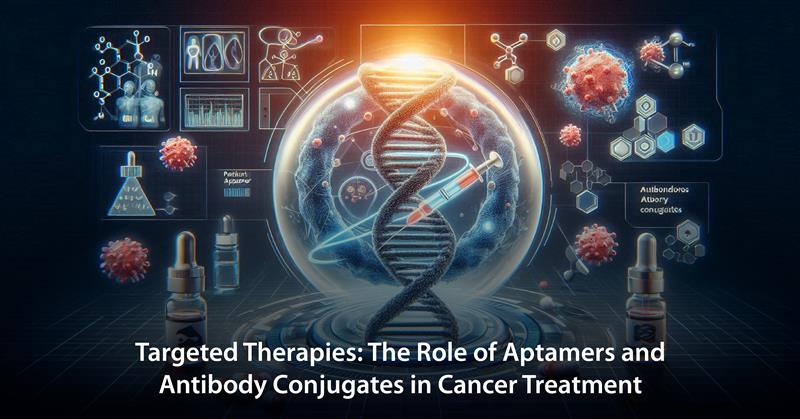Introduction
The development of oncology medicine continues because targeted therapy emerges as a central method to handle cancer types across different categories. The unique design of targeted therapies works differently from normal chemotherapy protocols since the therapies specifically strike cancer cells but preserve normal tissue health. Better outcomes and decreased adverse effects emerge when delivery becomes more precise. Researchers today use aptamers along with antibody conjugates as their most promising approaches for targeted treatment methods. The nucleic acid sequences called aptamers possess powerful attachment behaviors toward specific targets due to their single-stranded DNA or RNA structure. The antibody targeting ability can be merged with cytotoxic agent treatments by applying antibody conjugate designs. The incorporation of these molecules generates new anticancer treatments that offer enhanced drug delivery while making strategic target selection possible along with reduced adverse side effects in the body.
Understanding Aptamers in Cancer Therapy
Aptamers, which are single-stranded oligonucleotides, form specific three-dimensional structures that enable their ability for selective molecular target binding. Single-stranded nucleotide aptamers exhibit selective binding to proteins in combination with peptides and small molecules as well as complete cells. Medical professionals support the use of aptamers in cancer therapy because they possess both high binding specificity, inexpensive manufacturing potential, and low immunogenicity characteristics. The ability of aptamers to select specific markers during tumorous penetration makes them excel as optimal delivery agents.
Aptamers applied for pathway protection prevent cancer cells from multiplying. Safe transportation of chemotherapy agents through the platform brings cancer drugs to target cells while safeguarding surrounding healthy tissues. Scientists created cancer detection protocols at early stages through aptamer engineering because these molecules detect biomarkers that exist specifically in tumors.
